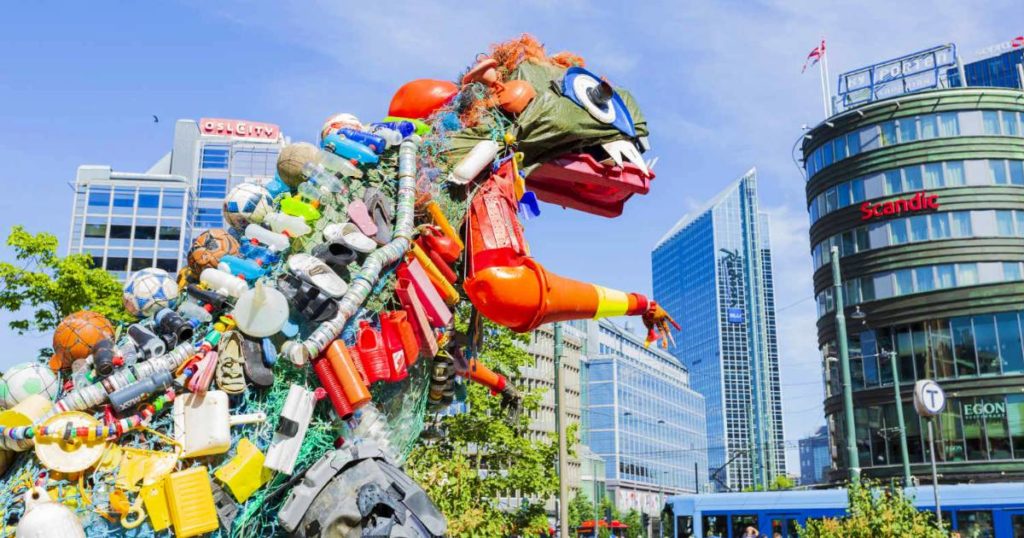Advertisements
Oslo, the capital of Norway, is a notable example of a city committed to sustainability and environmental preservation. With a population of over 670,000, Oslo has implemented a series of bold measures to improve air quality and ensure a healthy environment for its residents.
In 2019, Oslo was awarded the title of Environmental Capital, in recognition of its innovative and effective policies for the planet.
Plastozilla: Art and Environmental Awareness

One of the most eye-catching initiatives in Oslo was the creation of Plastozilla, a four-meter-high sculpture made entirely from plastic waste. This work of art, designed by artist Pippip Ferner, aims not only to beautify the city, but also to raise awareness among residents about the dangers of excessive plastic use and the importance of recycling. Installed in the heart of Oslo, Plastozilla has become a symbol of the city's commitment to sustainability and the environment.
Plastozilla is not just a sculpture; it is a powerful visual message about the global plastic waste crisis. In a city that prides itself on being the Environmental Capital, this work serves as a constant reminder of the need to rethink our plastic consumption and adopt more sustainable practices.
Oslo: An Example of Sustainable Waste Management
Oslo is known for its highly efficient waste management system, which is one of the pillars of its environmental strategy. In Oslo, waste separation is mandatory for all households, demonstrating the city’s commitment to promoting recycling and reducing its environmental impact. Oslo’s recycling system is one of the most advanced in Europe, with a well-established process that includes collecting and sending plastic materials to Germany for recycling.
In addition to recycling household waste, Oslo also has a dedicated system for collecting and recycling larger materials such as furniture, household appliances and garden waste. This comprehensive approach reflects Oslo’s responsibility as the Environmental Capital and its commitment to minimizing the city’s carbon footprint.
Oslo and the WHO Global Campaign
Oslo’s environmental efforts are not limited to waste management. The city is one of 42 participating in a global campaign led by the World Health Organization (WHO) to combat air pollution and protect public health. The campaign highlights the importance of collective action to reduce pollution and promote a healthier environment for all. As the Environmental Capital, Oslo is at the forefront of these efforts, implementing policies that improve air quality and encouraging other cities to follow suit.
Vision for the Future: Oslo Towards Total Sustainability
Oslo’s future is marked by a clear vision: to become a fully sustainable city with minimal CO2 emissions by 2050. This ambitious goal reflects the city’s ongoing commitment to the environment and the quality of life of its inhabitants. As the Environmental Capital, Oslo continues to develop and implement policies that promote sustainability in all aspects of urban life, from public transport to waste management.
Key goals of Oslo include:
- Reduce CO2 emissions across the city.
- Expansion of recycling practices and promotion of sustainable materials.
- Encourage public awareness through educational and artistic campaigns, such as Plastozilla.
Oslo as a Global Model for Sustainability
Oslo has established itself as a global model for sustainability, combining innovation, art and effective public policies to protect the environment. Oslo’s recognition as the Environmental Capital is a testament to its ongoing efforts to balance urban growth with environmental protection.
As we look to the future, Oslo continues to serve as an example for other cities around the world. The city demonstrates that with determination and innovation, it is possible to create an urban environment that respects and preserves the environment for future generations, cementing its role as a true Environmental Capital.
Check out other interesting facts about recycling clicking here.
Learn how to make art by recycling, Click here.



